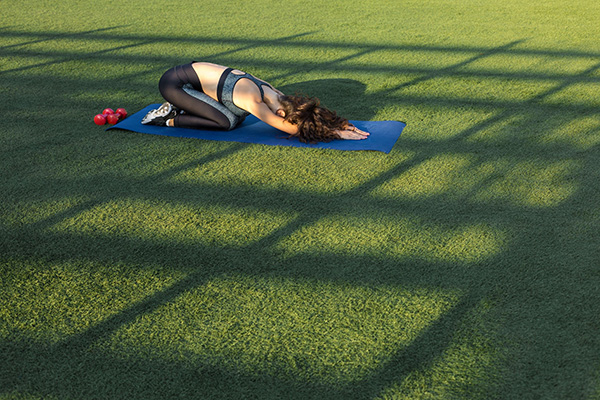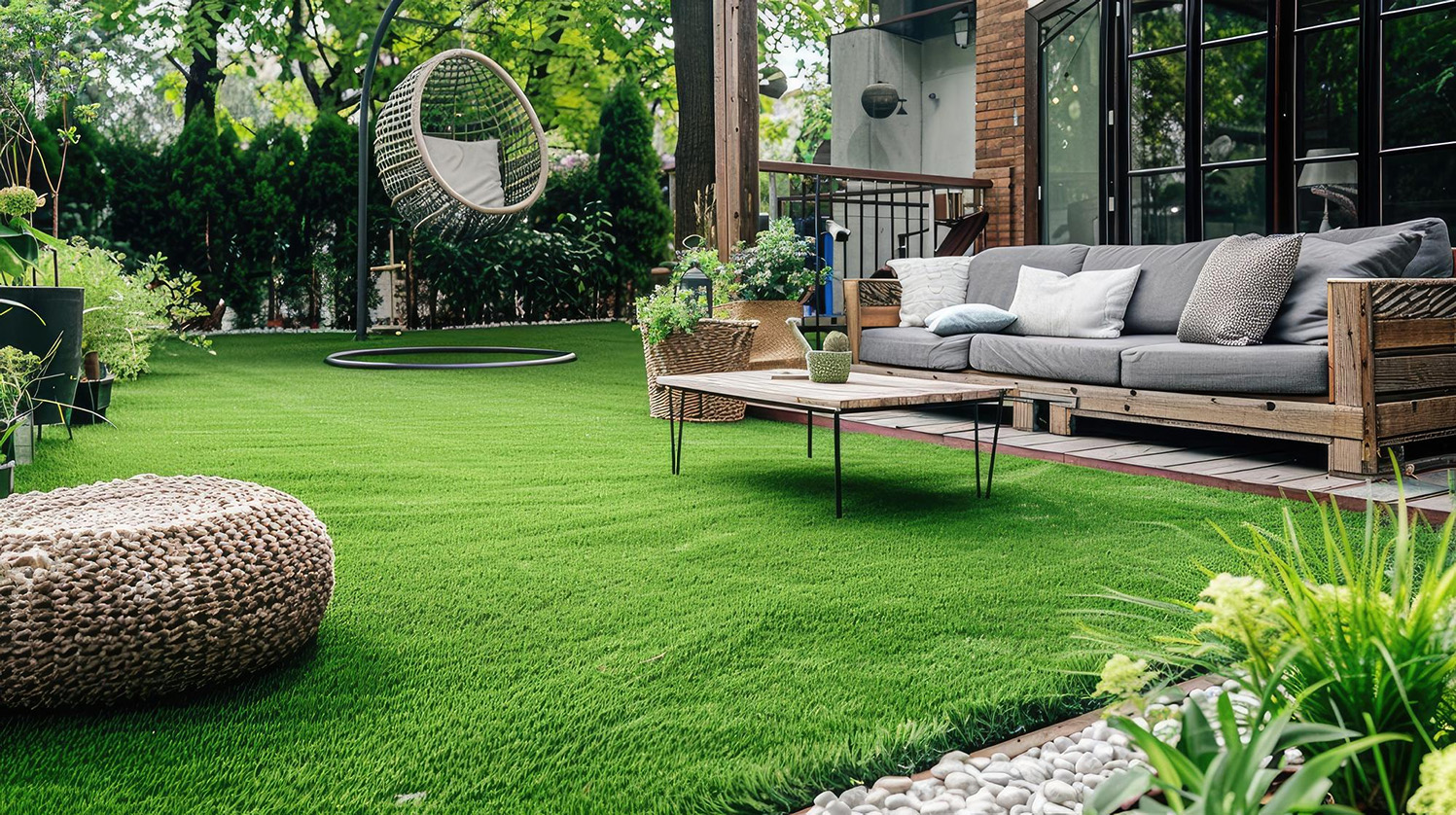Yoga enthusiasts are always on the lookout for new and interesting places to roll out their mats and find their zen. While traditional settings like yoga studios, hardwood floors, and natural grass have their merits, artificial grass has emerged as a surprisingly excellent surface for yoga practice. Whether you’re setting up a home yoga space in Abbotsford or expanding an outdoor class offering in Maple Ridge, artificial turf offers unique advantages that just might make it your new favorite yoga spot.
A Consistently Comfortable Surface
One of the most appealing aspects of practicing yoga on artificial grass is the consistent comfort it provides. Unlike natural grass, which can be lumpy, wet, or hide uncomfortable surprises like stones or insect nests, synthetic turf offers a uniformly cushioned surface.
In places like Langley or Chilliwack, where soil conditions and seasonal changes can affect lawn quality, artificial turf ensures the ground under your hands and feet is always soft, level, and safe. It’s gentle on joints during standing poses and firm enough for balancing postures.
Year-Round Accessibility
Outdoor yoga can be a beautiful experience—until the weather intervenes. Rain turns natural grass into mud, drought leaves it brittle, and frost makes it slippery. Artificial grass, on the other hand, is ready when you are.
With excellent drainage and no muddy mess, you can practice yoga shortly after rain in wetter areas like Mission or Hope. Its temperature-regulating surface stays more comfortable underfoot than concrete patios or heated decks, offering a more forgiving surface for all-season yoga in the Fraser Valley.
Clean and Hygienic Practice
From downward dog to savasana, yoga involves full contact with your surface. Synthetic grass provides a cleaner alternative to natural grass, which can harbor bugs, pollen, and traces of chemical treatments.
In allergy-sensitive areas like Agassiz and Pitt Meadows, turf allows you to enjoy the fresh air without the sneeze-inducing allergens. Many high-quality turf options are antimicrobial and easy to clean, making them perfect for private backyard yoga or public wellness events.
The Perfect Balance for Yoga Poses
Good yoga surfaces need the right combination of grip and give. Artificial turf offers subtle traction that prevents slipping during Warrior poses or lunges, while providing a uniform surface that supports Tree Pose or Half Moon with confidence.
In fitness-focused communities like Downtown Abbotsford or Willoughby in Langley, turf is even being used in studio courtyards and urban parks for sunrise yoga classes and community sessions.
Creating Dedicated Outdoor Yoga Spaces
More yoga teachers and homeowners in the Fraser Valley are installing dedicated artificial grass areas for practice. These turf spaces are designed to stay level, clean, and low-maintenance—with options to include alignment lines, shaded areas, and even lighting for evening flows.
Imagine a backyard yoga retreat in Yarrow or a studio extension onto a rooftop in Mission. With minimal upkeep and no watering required, it’s easier than ever to design a permanent outdoor practice area.
Connecting with Nature, Without the Drawbacks
Yoga is about harmony and presence—and many practitioners love the feeling of being outdoors in nature. But with natural settings come mosquitoes, itchy grass, and uneven terrain. Artificial grass gives you the best of both worlds.
You can enjoy the sunshine, sounds of birds, and open-air calm—without the usual outdoor distractions. It’s a popular option for studios offering outdoor wellness retreats in places like Hope or Deroche, where the scenery is stunning but weather and maintenance can be unpredictable.

Practical Considerations Before You Practice
Practicing yoga on artificial grass is intuitive, but a few simple steps can enhance your comfort:
-
Use a thin yoga mat if you want defined space and extra grip
-
Bring a yoga blanket for extra comfort during long holds or seated poses
-
On hot summer days in sunny areas like Abbotsford or Chilliwack, check the turf’s surface temperature or practice in shade
The Sustainability Factor
Natural lawns in the Lower Mainland require constant watering, mowing, and chemical care—especially in dry summers or heavily used spaces. Artificial grass eliminates those needs. For environmentally conscious yogis, turf offers a low-impact and water-saving solution.
Many Fraser Valley businesses and residents are switching to turf for eco-conscious landscaping. Modern synthetic turf is also recyclable and built to last 15–20 years, reducing long-term waste.
In Summary: Flow Freely, Practice Often
Artificial grass is more than just a landscaping trend—it’s a practical, accessible surface for outdoor yoga. From downtown rooftops in Maple Ridge to peaceful backyards in Langley and Mission, more people are embracing the comfort, cleanliness, and year-round availability of turf for yoga practice.
If you’re ready to turn your space into a personal sanctuary or expand your studio into the outdoors, artificial grass may be the smoothest path to deepening your practice.

